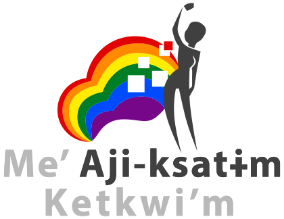This is a blog post about my continued pursuit to be faster, stronger and healthier as a Masters Athlete. My chronic injury is a rare one so some of this is to contribute to the google-able info that another mother-runner might come upon. I would have loved to come upon this info two or three years ago.

I titled this High Hopes. My fierce little girl plays U9 Hockey and this is her team’s warm up song. They listen to it in the dressing room to pump up and she insists that I play it on repeat on our way to the rink. As an athlete mother, I spend time talking with her about being an athlete. Never technical stuff. Even at age 8, she has a coach for that and she doesn’t need me to tell her how to play. Instead, Mama is the cheerleader and we talk about fun and being a good teammate and loving our sports. To be honest, she teaches and inspires me more than I do her.
At age 8, her love for sport is so pure and unencumbered by any history or baggage or performance expectations that she has placed on her young self. She gets home from hockey and sits on the couch and 20 minutes later tells me that she misses hockey already. She listens to this song and tells herself, “I am gonna be that one in a million” and she believes it with that pure love of sport and the way hockey makes her feel. I listen to this song and I watch her love of sport and I borrow this title because that’s what I have: high, high hopes that my fastest and healthiest days are still ahead of me. So let’s get after it.
The seasons of my running ‘career’ are as follows:
- Manage my way back to runner body health. Then 1a is a sub-phase where you are almost back to full health but need to make a long series of consistent smart training decisions to stay on the health track. Don’t be an idiot or you will bounce back to the injury penalty box.
- Train well: run fast, run long
- Race event
- Injury flare of chronic obturator externus problem
There are as many seasons in a year as there are race events.
It’s been this way for several years. With the right team, I have excelled at the “getting my body back to health” season. My osteopath is a genius and her treatment always irons me out as long as I can make good decisions while waiting to get back to all the way healthy. The injury is quite clear and what it responds to is quite clear. The training is almost the easy piece. I can do the hard work and I love it. The post-race injury flare is brutal. I am using every tool and every member of Team Erin possible to drop the “injury season.”
Let’s walk through the seasons.
Season 1: Manage my way back to runner body health:
The Coles Notes background: My chronic injury is scar tissue, some nerve damage and resultant dysfunction at the obturator externus- a tiny horizontal muscle that runs from the head of the femur to the wall of the pelvis. It’s a holdover from pelvic floor trauma and pelvic floor injury after the birth of my second child, now 7 years ago (this child and his older sister are the lights of my life, there are zero regrets).
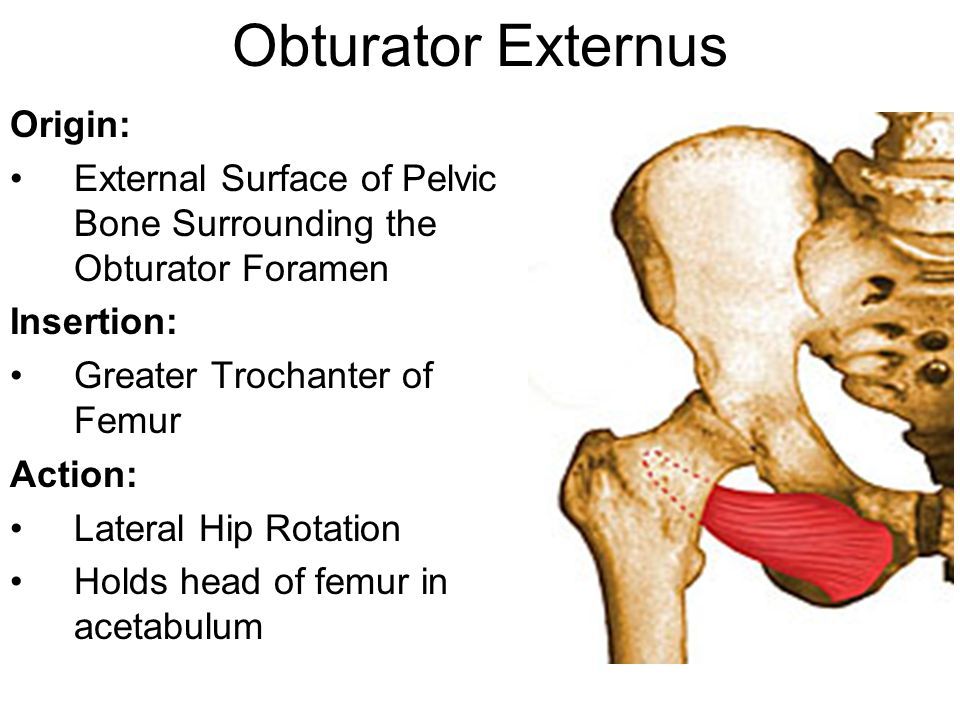
It took two + years to accurately diagnose the problem and during that two year period of time, I was unknowingly running on a weak and damaged pelvic floor. The obturator externus likely tore several times during this period. The pelvic floor is comprised of many muscles- others were damaged too. Next came really high quality pelvic floor physiotherapy and care that bumped my pelvic floor out of a “it may need surgery” to “this is as good as it will get, surgery will make it worse” zone. You can read more in this post here. I “graduated” from pelvic floor physio and moved on to osteopathy and that treatment keeps me healthy and running when I go once per month. It’s a mix of massage, manual therapy and now dry needling.
My osteopath, Martha Farron (eff-ing genius), at One to One Wellness, believes that the obturator externus’ nerves are running through scarred muscle tissue and the nerves have also become damaged. These damaged nerves fire up the obturator and it contracts when it doesn’t need to… and then it starts living in a contracted state and it becomes stiff and then ropey. Then it hurts. When it’s bad, it feels like a crayon stuck where the muscle should be and it hurts every stride I take.
Martha’s manual therapy frees the obturator up and works out some of the knots and ropey-scarry-congestion along it. I was really resistant to dry needling for a long time as that area of your body is super rich with nerve endings and it was estimated that it would be really painful. I hate dry needling. But this fall, when nothing else was working, I let her try it. Miraculously, it nearly immediately turned the nerve and therefore the muscle over-contraction off and it faded into the background of regular runner muscles.
At this point in the “season”, now I am back to healthy and can train. More on Season 1a: don’t be an idiot later.
Season 2: Train well: run fast, run long.
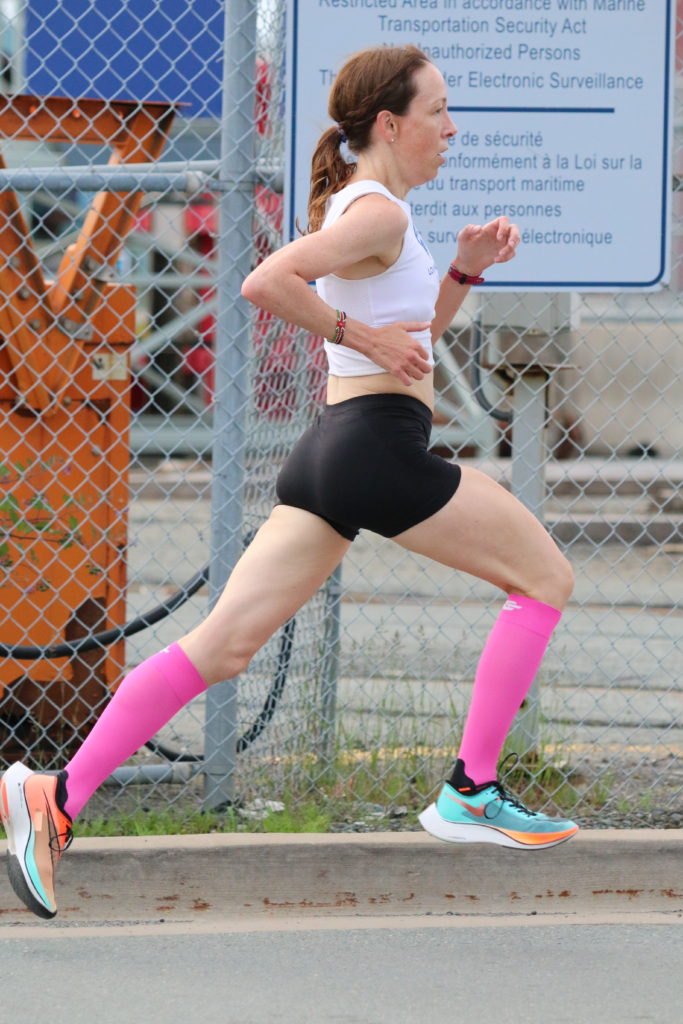
If I never raced, I would stay here: in a healthy running season.
But.
I. Just. Love. Racing.
So much.
I love seeing exactly how good I can be, how far I can push myself and where I can land.
Season 3: The Race or Time Trial (COVID, am I right?!) Event:
I have moved into a focus on mostly 3km, 5km and 10km with a sometimes half marathon thrown in. A running pal was asking me this month if I was going to run another marathon and the answer now is no. I am loving the short and fast stuff because it’s all about your internal fierce. Once you have your fitness and speed achieved, a 3km or 5km race is all about you and all about how fierce can you be? How hard can you hang in with the searing and relentless race pain? I love that.
I turned 40 in July 2020 and I’ve had some great race performances since then:
- 1 mile July 2020, 5:22
- 5km, July 2020, 17:33 (race recap here)
- 10km, Nov 2021, 37:28 (race recap here)
Season 4: Injury Flare
Those were all exciting new PBs. Not just Master’s PBs, but lifetime PBs.
But…. the power required to generate those race performances often winds up my obturator externus muscle and launches me in an injury hole. See:
- After that I 5km PB in July, my “recovery” led to me hobbling through the final 3 weeks of Run Across NS (not the smartest decision), significant flare of pain at obturator, followed by a bunch of unplanned rest days, 3 attempts to get back to regular running and 4 weeks without workouts as I tried to get my body back to health.
- After my 10km PB in November , I took more days off, a week of easy running and then went to a Road Hammer practice where the team was doing short and fast intervals. I did exactly one interval, obturator seized up, flared up, led to another long set of unplanned rest days, starts and stops and 8 weeks without workouts as I tried to get myself back to healthy.
I can do the training work and I can run fast. I can’t recover my vulnerable chronic injury spot: the obturator.
Post-5km injury flare, I had enough. It’s so frustrating to have this setback at the end of each goal achieved because I come into the next training cycle farther back than I finished it. I am never starting from zero- I have years and years of running on me. But I am almost never starting where I left off. Except for a healthy full 2019, this had been going on for years. I had the care of my chronic injury solid but I kept falling into this injury hole after race performances. It was time to try something new.
I am a Master Runner who is diligent in the gym. Strength work is no longer a luxury, it’s a necessity to keep my whole body healthy and running. I think that strength training led to a very healthy 2019 and then the initial lockdown of the COVID pandemic and no access to my osteopath for 5 months set me up for this end of 2020 injury seesaw. So I figured that I could probably do something different in the gym that might prevent my consistent fall into this injury hole if the flares are coming after powerful race performances. If I could just strengthen something related to my power stride, I figured that strength would protect me during the race and then maybe I will recover better. But was that something?
I thought that 3D Gait Analysis might help me find that something. I booked an appointment with Robbie MacDonald, physiotherapist at Nova Physio in Burnside.
It was a great experience right away. Robbie is a fast runner himself, having run a low 38 over 10km and fast over half marathon. He knew the runner body and the training that I was doing. He was also super complimentary about my running experience and performances: “you are really fast!”
I did my initial 3D Gait Analysis with him in October 2020. At that time, by just observing me run, he was saying, “Wow, you are so smooth and efficient! Your upper body barely moves. Ideal mid-foot strike. Beautiful stride.” I said, I hope so: this stride is the result of years of coaching, many under the great Cliff Matthews. Even so, he was confident that the data that 3D analysis would pull out would help us.
It did, in a big way. It revealed some significant issues arising from my left hip where my problem obturator externus has not been doing its job.
For you run geeks like me out there, here is what he found:

- Slight delay in completing your cycle of pronation on the left compared to the right. This would suggest you are beginning to supinate with a slight delay on the left.
- Increased knee rotation on the left compared to the right. This suggests an asymmetry between the coupling of tibial rotation and thigh/hip rotation. Since tibial rotation and thigh rotation appear to be within normal limits we look at other variables that can contribute to this and are able to observe left foot placement in a position of in toeing.
- an asymmetry of knee flexion during stance phase on the right compared to the left. This is most often observed on the problematic side and is therefore typically seen as a compensatory action for an injury
- Increased heel whip on the left which increases with speed.
- Timeseries curves reveal decreased ability to control left hip rotation.
That’s a lot of stuff, right, for what appears to a “beautiful stride” by eyeball examination?
This data allowed Robbie to build me a strength program to specifically correct the issues that were visible on 3D Gait Analysis. I got to hard work in my home “gym” and diligently performed my “Nova Physio Strength Set” at least 5 times per week. I went back to see Robbie twice and he advanced the Strength Set as he could see my body and my weak spots getting stronger.
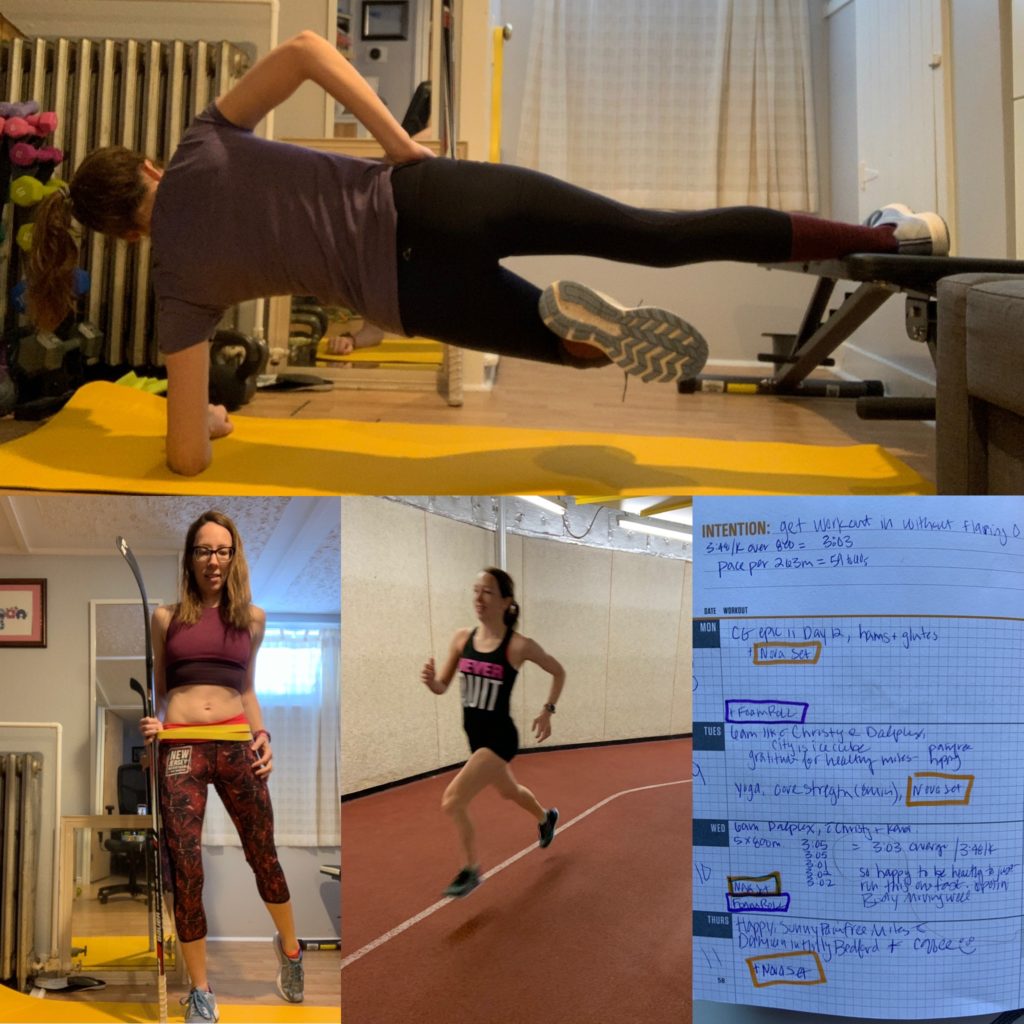
Robbie suggested that we re-do the 3D Gait Analysis in March. It would provide tangible data to see what impact the strength training was having. I happen to come into the 3D gait analysis with some tangible data from my training journal as well. I ran a 3km Time Trial on March 7. I was determined to make perfect recovery decisions after it. Instead of this 3km time trial launching me into another injury flare hole:
- I ran one easy week with 70 easy kilometers.
- The next week, I ran one workout and a long run.
- The week after, I ran two workouts, one within a long run. I had some crayon-type stiffness creep back into the obturator but it was only bothering at rest, never during running. This was a pretty significant improvement from my 2020 race recoveries.
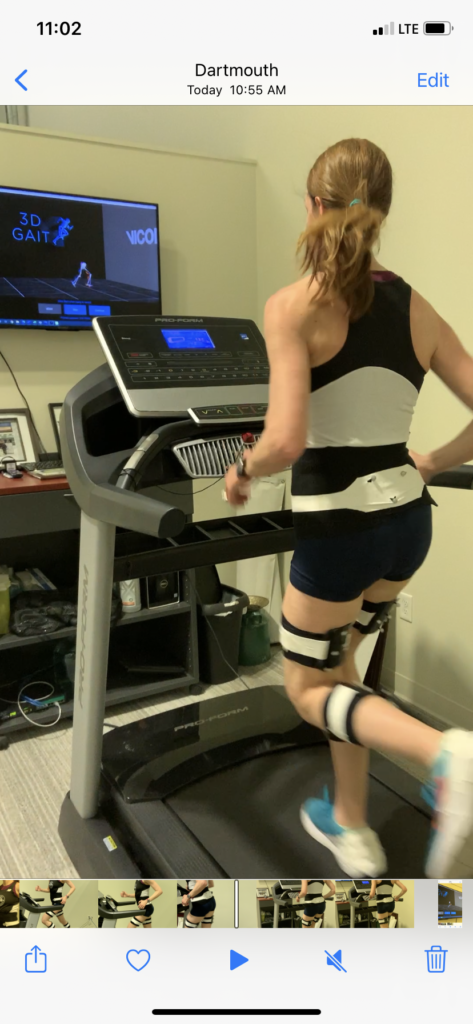
I don’t have the full data analysis from my 3D Gait session on March 29 yet but Robbie said that he could see a few very clear improvements right away.
High High Hopes.
I will test this next with a 5km time trial.
The “Don’t be an Idiot” Phase.
Now back to that critical time after recovery where you know that your body is on the road and running healthy in easy runs. But you want to get back to full volume training.
This phase is so critical. I will speak about myself here so that if this resonates, you don’t feel like I am calling you out, lol. Here, if I AM an idiot, I will never get out of season one and into season 2 (training well, running fast, running long) nor that coveted season 3: the race event.
In this phase, I risk being an idiot in many ways:
- Getting stuck in a cycle of negativity and hopelessness
- Getting impatient and doing too much, too fast, too soon
- Getting overconfident , over-competitive and in over my head in a group workout setting
Some things are really important to navigate this phase without acting like an idiot athlete.
Always Choosing Hopefulness matters here. At this phase, I am often running 5 days a week but I am not yet running the way I love to which is 5 days a week with easy runs at 10-15km, two speed sessions and a long run with my crew of Halifax Road Hammers.
In this phase, while training alone, I do sometimes get down on myself, frustrated that I am living in this fragile body and can’t just run away from this chronic injury. When I go here, I let myself feel this. Feeling it deeply is ok. But I know that I can’t stay here. When I am done feeling it, I force myself to choose a thought that will serve me better: I am grateful for what this body CAN do. I don’t need to focus on what it can’t do. This body just ran my second fastest 3k time in the middle of this season, despite still working back to full health and full volume.
I choose hope.
I search for and feed myself some season-themed metaphors. Thanks google-images.
“No winter lasts forever; no spring skips its turn.” –Hal Borland
“There is something infinitely healing in the repeated refrains of nature—the assurance that dawn comes after night, and spring after winter.” –Rachel Carson
I flip the page in my Compete Training Journal and I see one of my favorite quotes. “I am building a fire, and every day I train, I add more fuel. At just the right moment, I light the match.” Mia Hamm. I am still building my fire. It’s not yet time to light the match. I am firmly centred on hope.
Getting your team together matters in this phase. They are critical.
Your Coach: Get a coach. Then be open with them. And then listen to that coach. Sometimes we sabotage ourselves in impatience and we can get lost in unnecessary negativity and hopelessness. An objective voice of reason matters.

Whilst a little bit down on myself, before coming back to High Hopes, I told my Coach Lee that I was initially bummed at not getting a second quality workout in week two after my 3k time trial but that I was reminding myself that I am recovering from this 3km in a much better way that I recovered in 2020 and that’s progress. I told him that I feel far away from my fit and fast self but that I know that I am making the tiniest forward progress.
Coach Lee’s response: “Your recovery is most important, and slowly getting the fitness where you want will happen, just have to allow it to come over the coming training cycles. Lots of time to gain the fitness, so lets continue to focus on day by day and feeling good and keeping an eye on the body and how its feeling, with the goal for 4/8 weeks down the road. Keep up the great work.”
See? Your coach matters and keeps you in check with reality and facing forward with hope. This reality check keeps me present with where I am, not where I want to be and makes me less likely to get in over my head in a workout and blow my health by being too idiotically impatient to get where I want to be. As he says, “Erin, just allow it (fitness) to come.”
As a Love Training More Coach, I spend a lot of time here with my recovering athletes. My role is to hold up the tiny signs of progress that the athlete can’t see because they are so buried in where they are not instead of where they are. I know how to do this because I get buried there too if I am not careful.
Practitioners: If you are going to run for a long time and love the sport for a long time, you need practitioners who can skillfully care for your body and who also believe in you and support your training. I have those people.
My osteopath Martha makes me feel like an amazing elite athlete and that the healthy running future that I want is absolutely possible. She praised my tenacity often. While I do have this damaged tissue, she also brings focus and attention to my healthy and strong muscle tissue and makes me feel so good about my athlete self. This week, she said, “oh wow, glutes are so tight! But that’s ok, that’s just you, I feel how strong and powerful they are.”
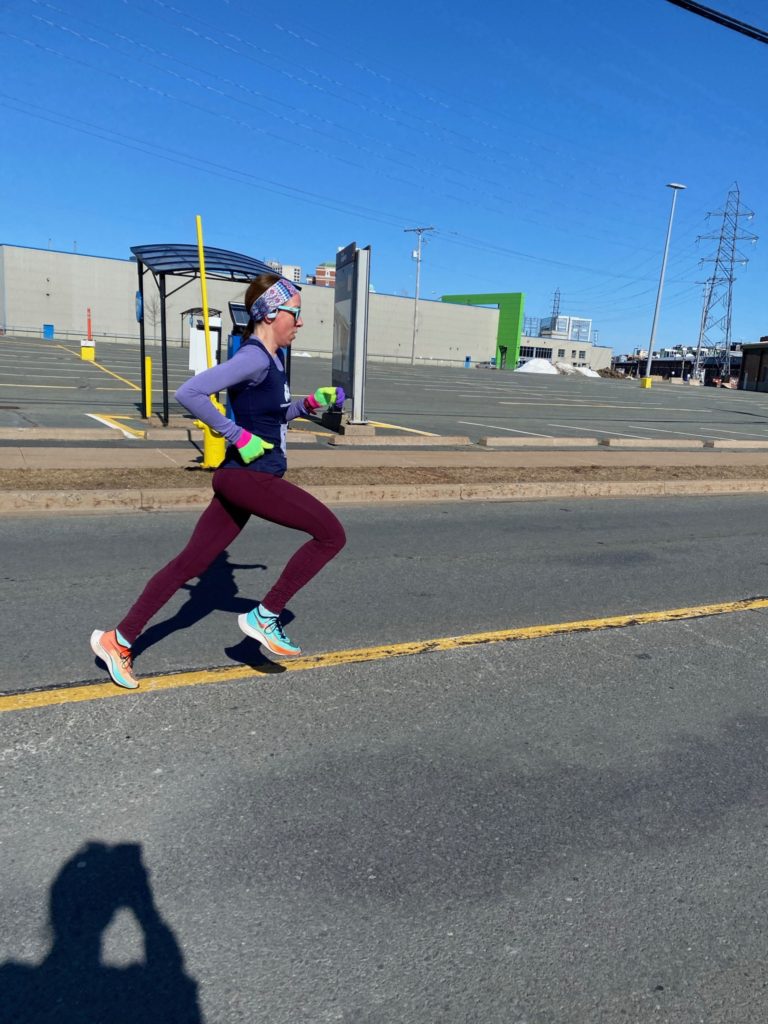
My physiotherapy Robbie is genuinely excited for my athletic success and that excitement grows success. Before my appointment this week, I emailed him my 3km Time Trial result and the pic that Linda snapped of me mid-stride because I was so happy about my foot placement in the pic. When I got into the room, he had the pic of me up on the jumbo display screen, eager and ready to point out all of the strong parts of my stride.
As Robbie was setting up the 3D Analysis equipment, he was saying, “I am so excited for this! Are you excited? I think I am more excited than you.”
If you have practitioners who hold any thoughts that running might not be healthy- fire them and find better ones.
Friends: if you all add 3 of the previous folks up, they are equal in sum to how important run friends are! I love you, women!
And now back to my 8 year old muse, my daughter. She has repurposed my 2020 Believe Training Journal and fills it with her hockey content. I saw her write this:

I love that. She was tired. It was worth it. The injury and recovery seasons are hard and they make me tired. But coming through them is always worth it.
So fine running friends, if you are anywhere in these running seasons along with me, get your High Hopes on too and see you on the roads.

